Airhead Review
PC
Airhead is a fantastic addition to the side-scrolling adventure platformer genre.
Reviewed by MariDead on Feb 09, 2024
Sidescrollers are often thought to be the original genre of games, so coming up with something new and exciting was one of the struggles faced by the Airhead developers. Octato, the devs of Airhead, are from Denmark and aim to make games with deep stories, relevant to the world in which we live. This is their first game, Airhead, a 2.5d platform adventure that has the unique twist of the player character being two separate entities, Body and Head, who must work together to explore this strange world the player has been dropped into.

Octato is very responsive to their fans, listening to feedback and wanting to create the best game possible for those playing. Handy Games came on to publish. They have a lot of experience with indie games, so Airhead is in good hands. It will be out on Playstation and Xbox consoles as well as PC.
Airhead opens in a very blue world, seemingly underground, with the only character the player can see being a small creature without a head. We later find out that a lot of the animals in this world seem to be missing one or more of the limbs we are used to seeing on Earth. This creature is called Body, and you will explore a little of the world as just Body for a few moments before you quickly come to meet the other half of our main characters. This is Head. Head is a creature that, rather than a heartbeat, has oxygen pumped throughout itself. The player and Body are clearly very interested in Head and move forward, getting still closer to it.
Shortly after Head appears, it is followed by a semi-biological, semi-mechanical mass of limbs that attacks Head and rips the part of him that feeds oxygen through the rest of itself. Body, a selfless being with the instinct to help those it sees, is a witness to all of this and can’t watch this tragedy take place and puts it on himself to help the poor Head. While holding the Head, both Body and Head are put together to become a symbiotic being called Airhead, hence the title of the game.
Airhead, the character, not the game, can only survive with the help of the oxygen tanks that are scattered throughout the world. So the player has to traverse the world, keeping an eye out for the tanks to help keep Head alive. Through exploration, Body tries to find the machine that stole the vital part of Head’s organism that will allow him to become whole again. Airhead has the chance to explore not only the underground caves they begin in but also the overworld, learning more about what is happening in their surroundings.
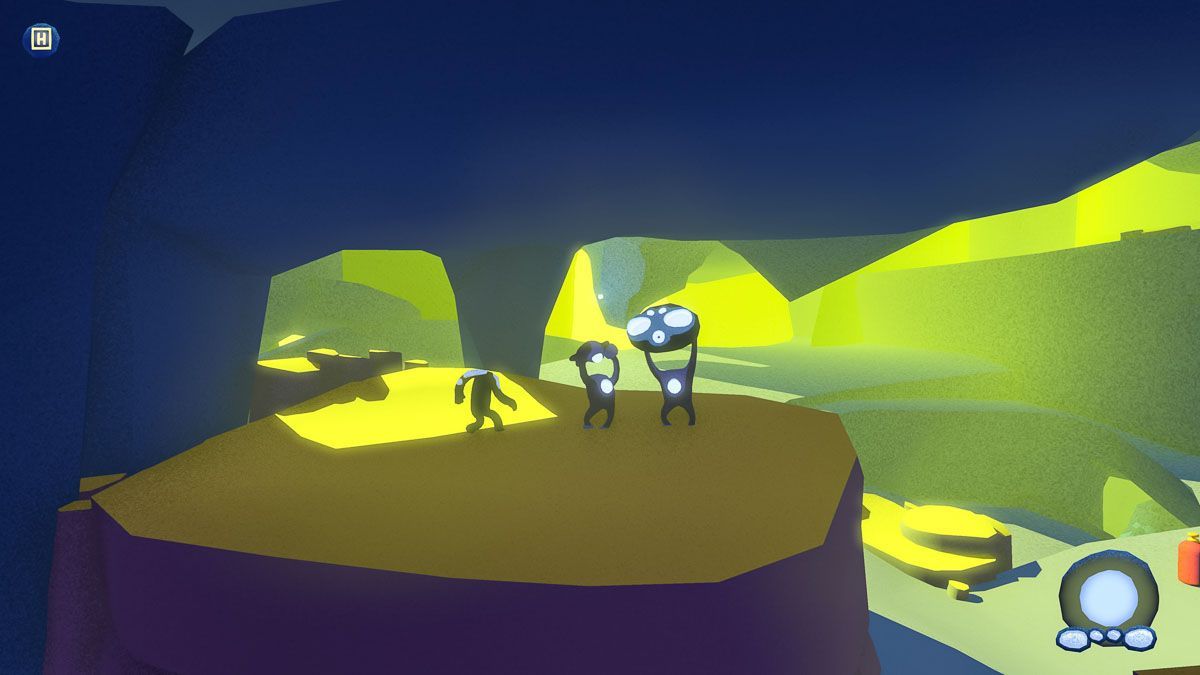
Body clearly has little knowledge of what happens above ground, knowing little about creatures that are unlike itself. This is shown in moments such as Body being unaware that the Airhhunters, a purple creature that looks just like Body but without its giving and kind attitude, accidentally leave Head at their mercy, or lack thereof, without realizing their intentions as they steal the poor helpless Head.
Head has very little autonomy at the beginning of the Airhead as it is simply being carried around and is helpless to others who may try to grab and steal it. Head can’t even live alone; as soon as the Body drops its Head on the floor, the Head starts to deplete in air and needs to be picked up and refilled as quickly as possible. However, as the story progresses, it seems that things are not as simple as Body thought, with the being that stole its oxygen component being a smaller part of the story as a whole. Body and Head have to work as one, despite the little they know about each other, in a game about trust and companionship.
While the story seems simple and cute on the surface, those who wish to look deeper can see commentary on some of the more relevant issues from our world. While it has not been confirmed by the developer, there are definite sections that suggest Airhead wants to shine a light on environmental issues going on in our world. In addition to this, there are also messages of the importance of friendship and showing love and care to those who need it without hesitation. Body and Head need each other; the story allows that compassion to shine through in a way that is not being smashed over the player's head but also cannot be missed.
The gameplay in Airhead is very simple. It is a 2.5D side scroller with puzzles and an imaginative world to explore. The puzzles are a lot of fun and present gameplay that is both challenging and fun in equal measure, something that is very difficult to implement effectively. The world that is being explored is so much fun, with lots of environments that present additional challenges, which also adds to the gameplay. There would be very little to say if that was the extent of it, but there is so much more to the gameplay than that. This is because of Head’s very unique needs.
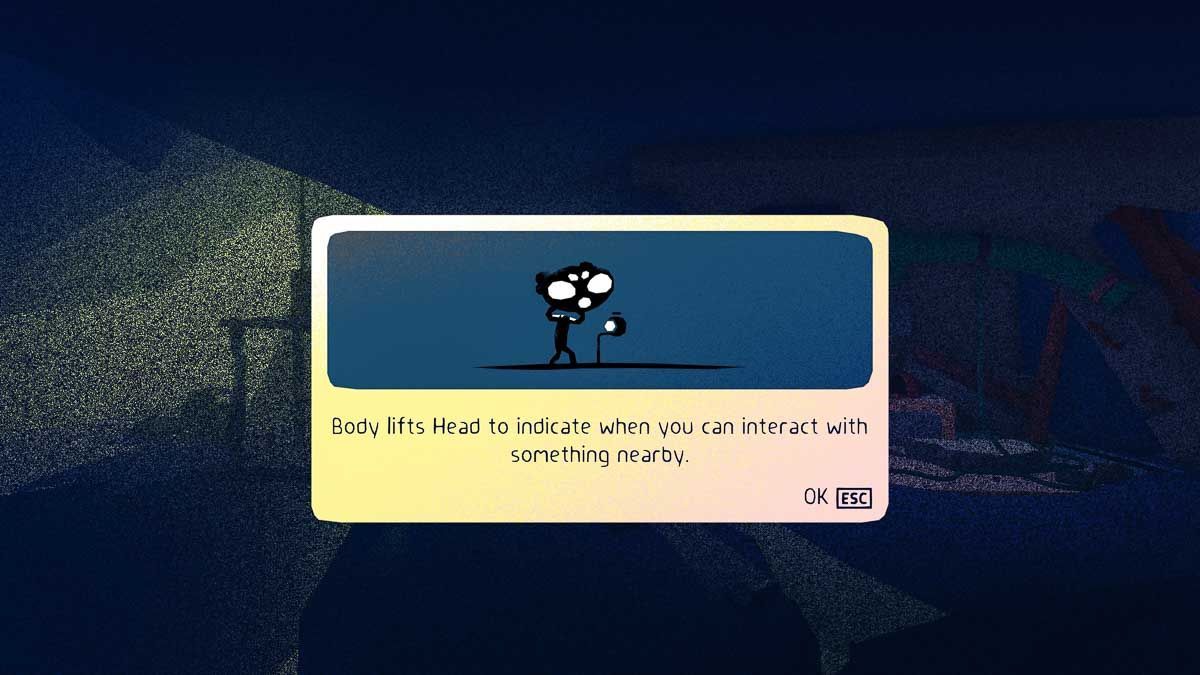
See, due to Head’s limited oxygen capacity Body has to move from tank to tank to make sure Head can be refilled with air as often as possible. This is the twist Airhead has on the genre that helps it bring something new to it. Head needs regular refills as it loses air whenever the entire Airhead is moving or if it is left on the ground not with Body. If you are like me, you may not notice that your Head remains inflated if you stand still, and, again, if you are like me, you will rack up a lot of early deaths as you twitch backward and forwards in a space rather than standing still to examine puzzles.
The loss of oxygen Head experiences, while adding an interesting mechanic to the game, does come with its downsides. Due to Head’s constant deflation while Airhead is walking, it can be hard to explore areas to the extent you would like. This is a particularly negative thing as Airhead is a stunning game with beautiful areas to explore, and not being able to see them to the extent you may want to do a disservice to the effort that went into the design.
Having to stay still in order to conserve oxygen does encourage a slower pace to be taken throughout the game, which is a nice change from the sometimes frantic nature of many other side scrollers. This is not to say that there are no moments of this frantic nature. There are times when the air tanks are placed just far enough apart that the screen begins to turn to black, showing Head is fully out of the air as you arrive upon a cylinder, creating moments of very high tension. These moments are examples of the meticulous care that went into the placement of every one of these cylinders.
It should also be noted that Head does not attach itself to Body, rather Body is holding head at all times meaning Airhead can't do things such as climb ledges too high to jump, or move objects that would require both hands to pull. This means that Body has to drop Head on the ground a lot where it will slowly deflate while Body moves what it needs to move. Body will also only hold Head where its head would be, so getting through smaller gaps is a lot harder as Body will often have to find a slope to roll Head down or a movable object that can be used to push Head where it needs to go.
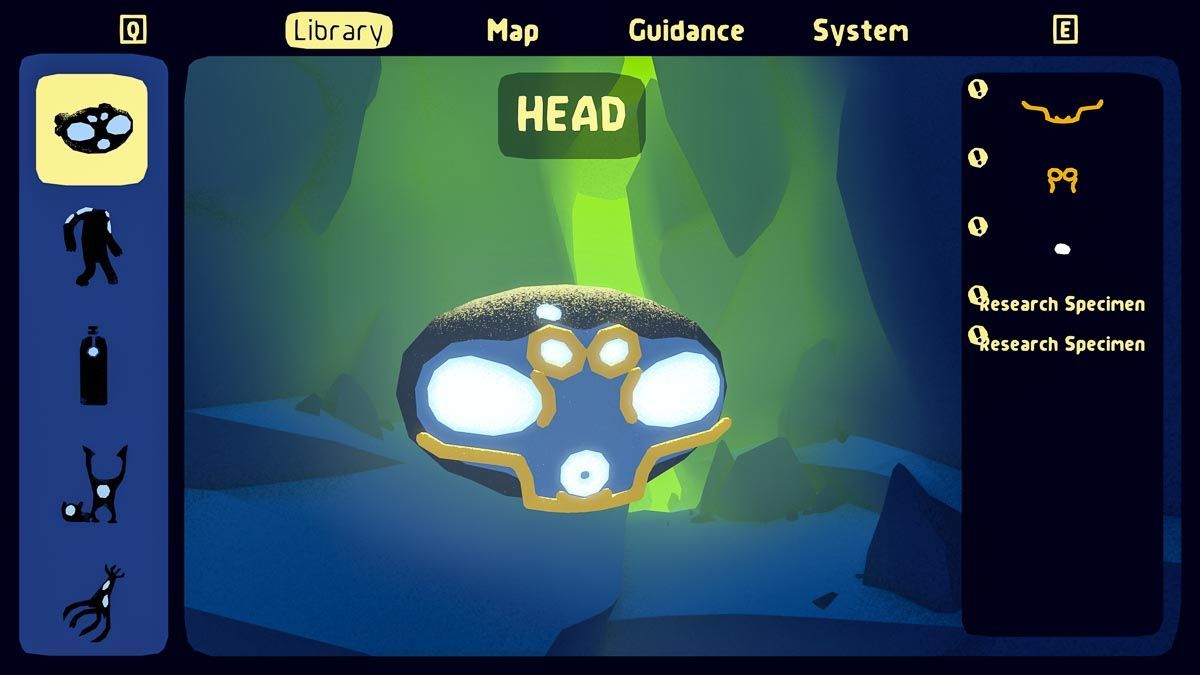
As well as the air tanks, there are also canisters of helium found in certain areas of the map. These can be utilized by Airhead to float high into the sky and access areas that the Body alone would not normally be able to reach. Most of these lead to a variety of areas that can be accessed from the first time you use the helium tank, but Airhead itself may not be ready to explore those parts fully until the player has found certain upgrades; more on those later. The helium tanks can also be sometimes found underwater.
Navigating underwater as just Body is very easy as it has no need to breathe and can explore freely. Head, however, is full of air, and it floats until it has been emptied out, at which point it is empty of oxygen, and it dies. These deepsea helium tanks mean that Airhead can be emptied and then refilled in a way that allows it to float out of the water and, hopefully, on to the next section. There are even moments where Body has to leave Head to float at the top of a cave like a forgotten balloon while Body moves an object under Head to catch it and refill it once it has emptied of helium.
There are other creatures to interact with in Airhead. The first of which is a Quaduid, an underwater octopus-like creature that Body experiences alone before meeting Head and acts as a tutorial on the basics of the mechanics, showing the player that creatures in this world work on habit and breaking said habit will often change their behavior in a way Airhead will later use to its advantage. The next of these creatures are the Airhunters. These little headless weirdos add a lot of character to the world, as well as being a very fun part of the gameplay.
In their first meeting, Body has to carry an Airhunter’s baby over a shallow pool of water to its parent on the other side. In this brief interaction, the player is shown two vital things. One- they will not cross water. Two- their young are small enough for Body to pick up. In the next interaction, the player will find that, as well as this, the Airhunter has the ability to pick up Head. This starts as a very useful, suggesting that the creatures will be willing to carry Head to places Body can’t navigate while holding Head. However, the Airhunters are quickly shown to have an ulterior motive.

As their name suggests, they are desperate for oxygen and willing to steal it from Head to feed his air to their young so they can grow up. This creates a difficult situation where Body now has to protect Head from it by either keeping hold of it or only putting Head down in places the Airhunters can’t reach, such as on the other side of the water. If Body finds Airhunters young, it can grab it, causing any Airhunter with hold of Head to drop Head and come to take their young back from Body.
This can create some fun puzzles where it will seem as though Body needs the Airhunters' help to get Body somewhere but also appears to be putting Head in a vast amount of danger by doing so. There is a section fairly early in Airhead that presents just this situation, as the Airhunters will not carry Head over to where Body can climb a vine to get to. It was only by using the hints the game offers that I realized I had to help the Airhunters first, getting their young to the oxygen tank, for them to help me.
The hints are another huge part of the gameplay. They allow the player to get guidance on a section should they be stuck in that area for too long. Most are very helpful and draw the line of being cryptic enough not to take away a sense of achievement from the player but not so puzzling they just add to the confusion. Some others, however, can be fairly obvious and unhelpful.
In one section in particular, Airhead has to make a rock fall, causing an avalanche that will open up a new section for the player. Airhead alone isn’t heavy enough to dislodge the rock, but there are some Copillars, a small colonous creature afraid of light, nearby that could be scared onto the rock, in theory. The problem comes that the Glowbees that can scare the Copillars do not always want to leave their section, and the hint simply said that “sometimes Body and Head are not enough alone”, which is very unhelpful when the thing you need help with how to get the Glowbee in place, not the Copillars.

While sometimes annoying in the moment, the hints are a good addition to the game. They allow for some assistance in a world where the character can’t talk. Body and Head do not have the ability to tell the player what they are thinking beyond Body lifting Head every time they are near an interactable. The hints are ultimately a net good, even if sometimes they can be a little unhelpful.
The section with the Copillars does, however, demonstrate a slightly larger issue at bay with the puzzles. Every time Airhead uses an air tank to fill up, the game saves, and with every level gliding seamlessly into each other, there are no natural checkpoints to return to should the player want to start a section fresh and begin it again. This left me in a difficult position during the Copillar section of the game as I accidentally moved them around to inconvenient spots when first exploring the space.
This can often make puzzle sections harder, and being able to start a puzzle again with all the pieces in the opening position can often help you try the puzzle again. However, Airhead needs to refill a lot, meaning the most recent save is so close to where you just were there is next to no point reloading as you are at almost the same point. It is also customary for NPCs to move back to their starting positions should the player leave their area. I went and did a completely different puzzle before returning and found that none of the AI had moved back to the beginning.
While it did not break the puzzle, it did make even navigating the space very hard, as the air tanks were now at the limit of the distance they could be with the new route I had to take. This is an issue with the air tanks in general. Not being able to look around a puzzle first can be very frustrating as you have to keep returning to the tanks to fill up, which limits the exploration the player can do before committing to the puzzle. This can cause some annoyance depending on how you normally approach puzzles in games; the ability to look around before diving in is almost completely removed from the player.
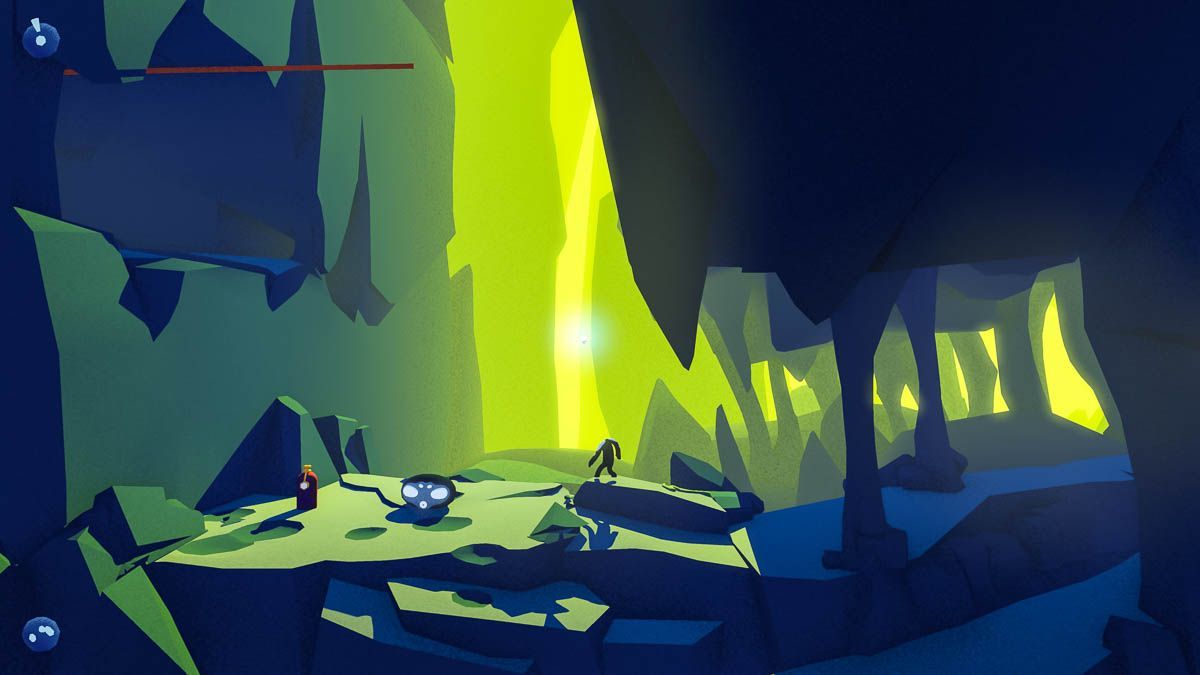
The final part of the gameplay is the Upgrades that Head can get as the pair move through the game. Head can have upgrades that give different skills, such as expelling air to operate lifts, or a very helpful one that allows Head to emit a light that can not only light the way but also scare Copillars without using Glowbees. Each upgrade feels like an effective and useful addition to Head and benefits in ways that feel deliberate, not just a random add-on that plays very little part in the next section of the game.
While some features are a little annoying, the gameplay is very fun and extremely well thought out. The placement of the air tanks alone shows a fantastic level of attention to detail. While I am an explorer at heart and miss being able to navigate more freely, the limitations add a unique feature to a genre bursting at the seams. Plus, the map is very helpful and shows the oxygen refill stations, making exploring a bit more of an option for a more cautious player.
The character designs in Airhead are very cute, and all work cohesively in the world they are in. Body is not the only creature that is without one of its limbs. The Airhunters are also missing their heads, looking a lot like a purple version of Body. The Airhunters are one of the many species seen on this planet that is flush and full of life. The devs have clearly put a great deal of effort into creating a diverse and imaginative biology for their world to contain in Airhead.
Another example of this can be found in the Copillars. These small creatures look like little land squids and spend their time running away from the light and turning themselves into little bridges to get across gaps. Although not in sight, they have the characteristics of ants working together as a colony to evade that, which scares them. This is another example of the world being fleshed out with creatures that all work together in a way that feels like they really could exist together on this imaginary planet.
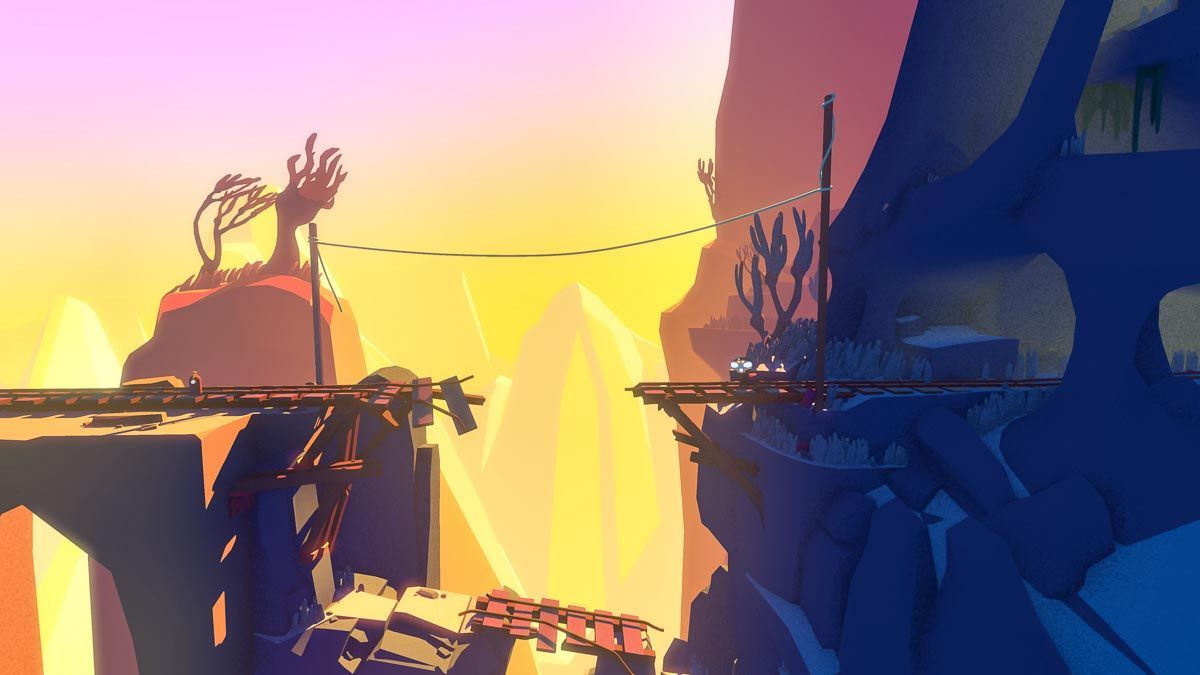
Airhead also expresses its intentions very clearly in its artwork. An example is in the cool blue and purple tones that instantly indicate to the player that they are underground. Another example is Airheads version of the yellow tape or white paint that shows a player interactives. This is done through a yellowish-green ivy on the rocks and boulders that can be interacted with. This ivy fits in the general look of the world in Airhead and the land's biodiversity. Another way interactives are televised is by a gentle glow that will indicate the non-biological movable objects such as the train.
The graphics allow for this clear indication to be broadcast so that it doesn’t drag the player out of the immersion they are experiencing. Even the oxygen bottles are easy to find, even in the dark, as they have a dial that glows but still fits into the world's aesthetic. It is not easy to have an object both standout and blend it. It takes a lot of dedication and work to create this, and Octato has created this blend expertly throughout Airhead.
The sound design found throughout Airhead is cohesive with the rest of the world created by Octato. The unique look of the biodiversity of the world the player is thrown into is paired beautifully with the sound effects added. Many of the creatures make small, squelching sounds as they move. Body also has a little pitter-patter of footsteps as it moves around. They are very cute and match the surface the player is moving across, splashing in water and being a gentle pat on the stone. The music is suitably calming and builds impressively in moments when it is necessary.
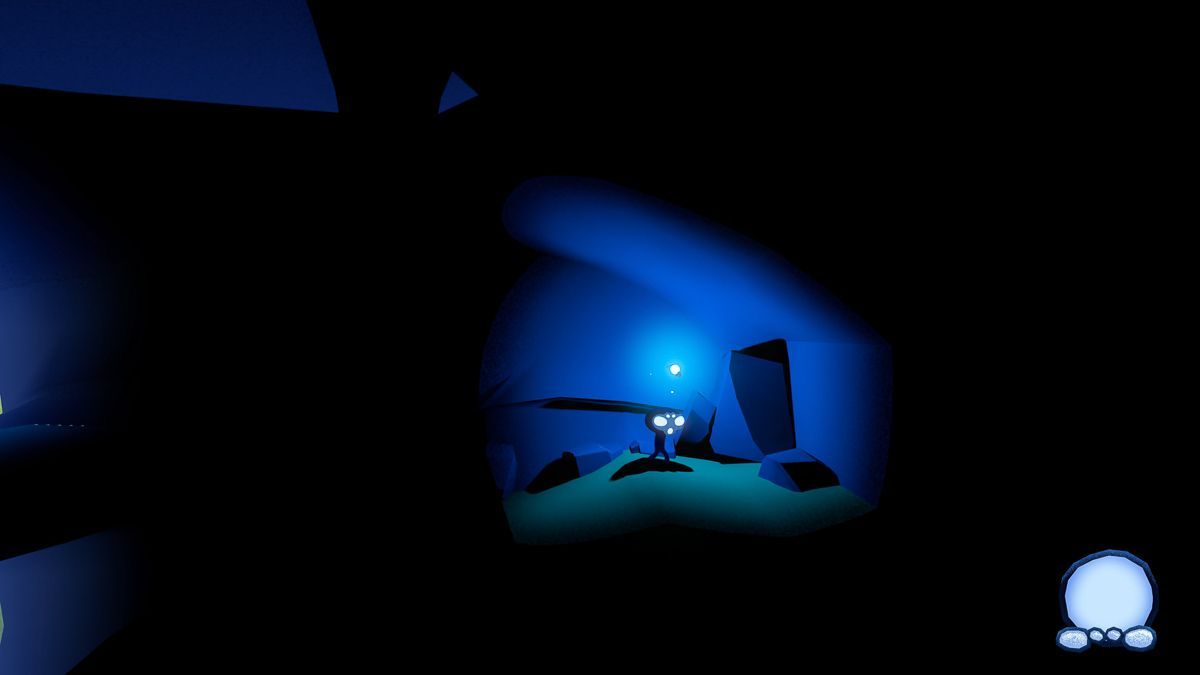
Airhead is a fantastic addition to the side-scrolling adventure platformer genre. The need to refill Head very often adds a unique additional element to the gameplay. That, layered with challenging and enjoyable puzzles, a fantastic world to navigate, and unique creatures within it, make for a really entertaining experience. There are some frustrations that come with Head’s lacking autonomy, as it can be annoying to have to constantly return to the air tanks rather than just exploring, and the set pieces not resetting can be a little annoying. Despite this, Airhead is a welcome addition to the gaming market and offers a great deal of fun with its interesting premise.
Senior Editor, NoobFeed
Verdict
Airhead is a fantastic addition to the side-scrolling adventure platformer genre. The need to refill Head very often adds a unique additional element to the gameplay.
84
Related News
No Data.

